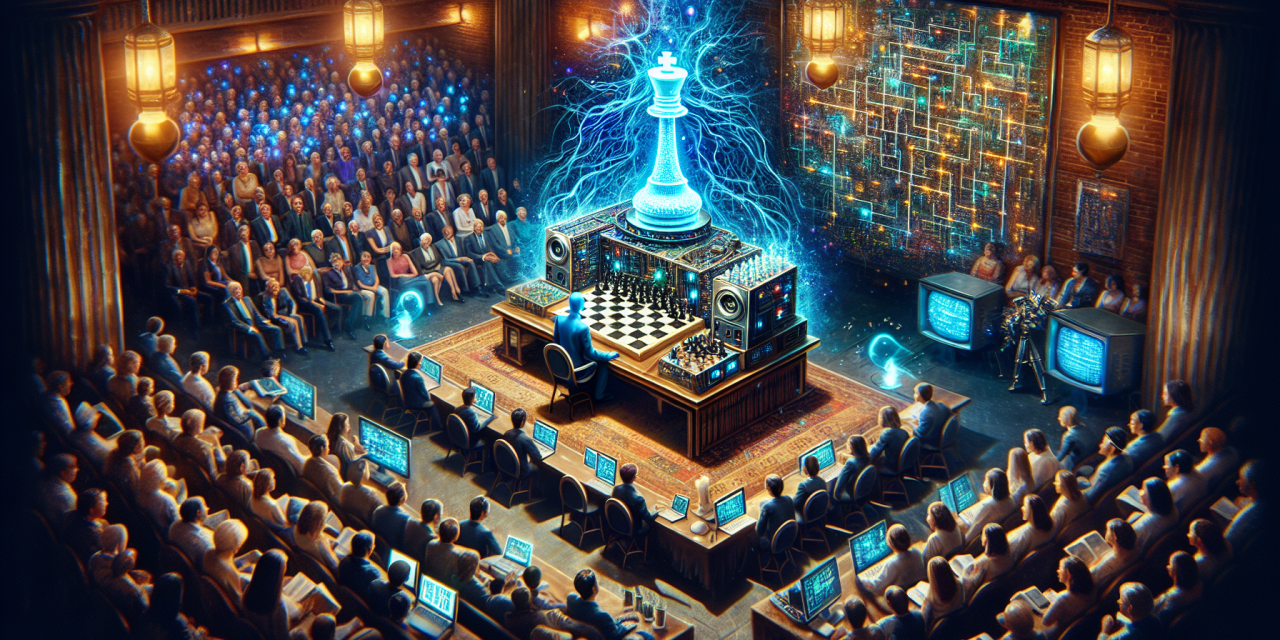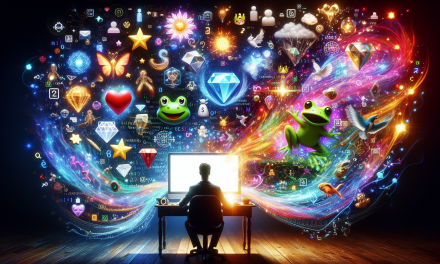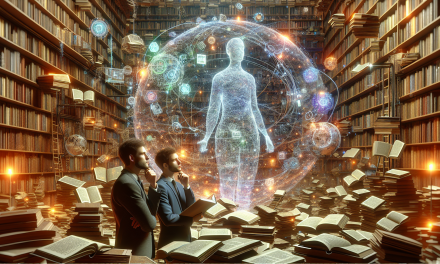Picture this: It’s 1997, and the world watches in stunned silence as a room-sized computer named Deep Blue defeats world chess champion Garry Kasparov. The headlines scream about machines outsmarting humans, and suddenly everyone’s wondering if robots are about to take over. But here’s the thing—Deep Blue wasn’t actually “thinking” about chess at all. It was more like a incredibly fast calculator that happened to be really, really good at one specific thing.
Fast forward to today, and AI is everywhere—recommending your next binge-watch, helping doctors spot diseases, and even beating professional video game players. But how did we get from a chess-playing calculator to AI that seems to learn and adapt like, well, like us? The journey from Deep Blue to today’s AI tells a fascinating story about two completely different approaches to making machines “smart.”
The Deep Blue Approach: When Bigger Is Better (Sort Of)
Let’s start with Deep Blue, because understanding how it worked will help you appreciate just how revolutionary today’s AI really is. Imagine you’re trying to become the world’s best chess player, but instead of learning strategy and patterns like humans do, you decide to memorize every possible chess position and what the best move would be in each situation.
That’s essentially what Deep Blue did, except it didn’t memorize everything—that would be impossible even for a supercomputer. Instead, it used something called “brute force search.” Think of it like this: every time Deep Blue had to make a move, it would mentally play out millions of possible games in its head, looking ahead maybe 6-12 moves into the future. It would explore every possible response Kasparov could make, then every possible counter-response, and so on, creating a massive tree of possibilities.
Deep Blue could evaluate about 200 million chess positions per second—imagine flipping through 200 million different chess boards every single second and deciding which one looks most promising. Its “intelligence” came from pure computational power and very smart programming by human experts who had hardcoded everything the computer needed to know about chess strategy.
This approach worked brilliantly for chess, but it had a major limitation: Deep Blue couldn’t do anything except play chess. Ask it to recognize a cat in a photo, play tic-tac-toe, or even play a slightly different board game, and it would be completely helpless. It was like having a friend who’s absolutely brilliant at one subject but can’t apply that intelligence to anything else.
The Learning Revolution: Meet AlphaZero
Now let’s jump ahead to 2017 and meet AlphaZero, Deep Blue’s spiritual successor that changed everything we thought we knew about game-playing AI. AlphaZero didn’t just beat the best chess programs in the world—it learned to play chess, Go, and Japanese chess (shogi) all by itself, starting with nothing but the basic rules.
Here’s where it gets really interesting: nobody programmed AlphaZero with chess strategies. No human expert told it that controlling the center of the board is important, or that you should protect your king, or any of the thousands of chess principles that took humans centuries to figure out. Instead, AlphaZero learned by playing against itself millions of times, gradually discovering these strategies through trial and error.
Think of it like learning to ride a bike. You could try to memorize every possible situation you might encounter while cycling and the exact response for each one (the Deep Blue approach). Or you could get on the bike, wobble around, fall down a bunch of times, and gradually develop a “feel” for balance and steering (the AlphaZero approach). The second method is messier and takes more time initially, but once you learn it, you can adapt to new situations—different types of bikes, various terrains, unexpected obstacles.
AlphaZero essentially learned to “feel” chess, and in doing so, it discovered some strategies that surprised even grandmasters. It would make moves that looked strange to human experts but turned out to be brilliant several moves later. It wasn’t just playing chess—it was understanding chess in a way that could adapt to new situations.
Hardcoded vs. Learning Intelligence: Two Paths to the Same Goal
So what’s the real difference between these two approaches? Let’s break it down with an analogy you’ll recognize.
Imagine you’re learning to cook. The “hardcoded” approach (like Deep Blue) would be like memorizing thousands of exact recipes. You’d know precisely how to make spaghetti carbonara, chicken tikka masala, and chocolate chip cookies, but if someone asked you to make something slightly different—like spaghetti with a different sauce—you’d be lost.
The “learning” approach (like AlphaZero) would be like understanding the principles of cooking—how heat changes ingredients, why certain flavors work together, how to adjust seasonings by taste. You might start by burning a few eggs and oversalting your first soup, but eventually you’d be able to cook almost anything and even invent new dishes.
Both approaches can produce excellent results, but they have very different strengths and weaknesses:
Hardcoded Intelligence:
- Super reliable for specific tasks
- Fast and predictable
- Easy to understand and debug
- But inflexible and limited to what programmers anticipated
Learning Intelligence:
- Adaptable to new situations
- Can discover unexpected solutions
- Improves with experience
- But sometimes unpredictable and harder to understand
Where We Are Now: The Best of Both Worlds
Here’s where things get really exciting: today’s AI systems often combine both approaches. Your smartphone’s voice assistant uses hardcoded rules for understanding grammar and sentence structure, but it also uses machine learning to adapt to your accent and speaking patterns. Self-driving cars have hardcoded safety rules (always stop at red lights) but use learning algorithms to recognize pedestrians, cyclists, and unusual road conditions.
Netflix recommends movies using algorithms that learned your preferences from your viewing history, but those recommendations are also guided by hardcoded business rules (like promoting their own original content). Even the AI that helps doctors analyze medical scans combines learned pattern recognition with hardcoded medical knowledge that human experts programmed in.
This hybrid approach gives us the reliability of hardcoded systems with the adaptability of learning systems. It’s like having a cooking method that includes both reliable basic techniques and the flexibility to improvise when needed.
Your Turn to Think Like a Coder: Where Do We Go Next?
Now that you understand these two fundamental approaches to AI, you can start seeing them everywhere. When you use a calculator, you’re seeing hardcoded intelligence—it follows precise mathematical rules programmed by humans. When you get personalized recommendations on social media, you’re seeing learning intelligence—algorithms that have figured out what content keeps people engaged by analyzing millions of users’ behavior.
But here’s what’s really exciting: we’re just getting started. The future of AI will likely involve even more sophisticated combinations of hardcoded knowledge and learning systems. Imagine AI tutors that combine hardcoded educational principles with learning algorithms that adapt to each student’s unique learning style. Or AI assistants that use hardcoded ethical guidelines while learning to better understand and help their specific users.
The strategic thinking that made Deep Blue possible—breaking complex problems into smaller, manageable pieces, thinking ahead, considering multiple possibilities—these skills are just as relevant today as they were in 1997. Whether you’re designing a learning algorithm or just figuring out the best way to organize your homework schedule, you’re using the same fundamental approach: analyze the problem, consider your options, and choose the strategy most likely to succeed.
The real magic happens when we start thinking about problems the way both Deep Blue and AlphaZero do: with the systematic approach of hardcoded intelligence and the adaptive creativity of learning systems. What challenges in your own life might benefit from this kind of hybrid thinking?








